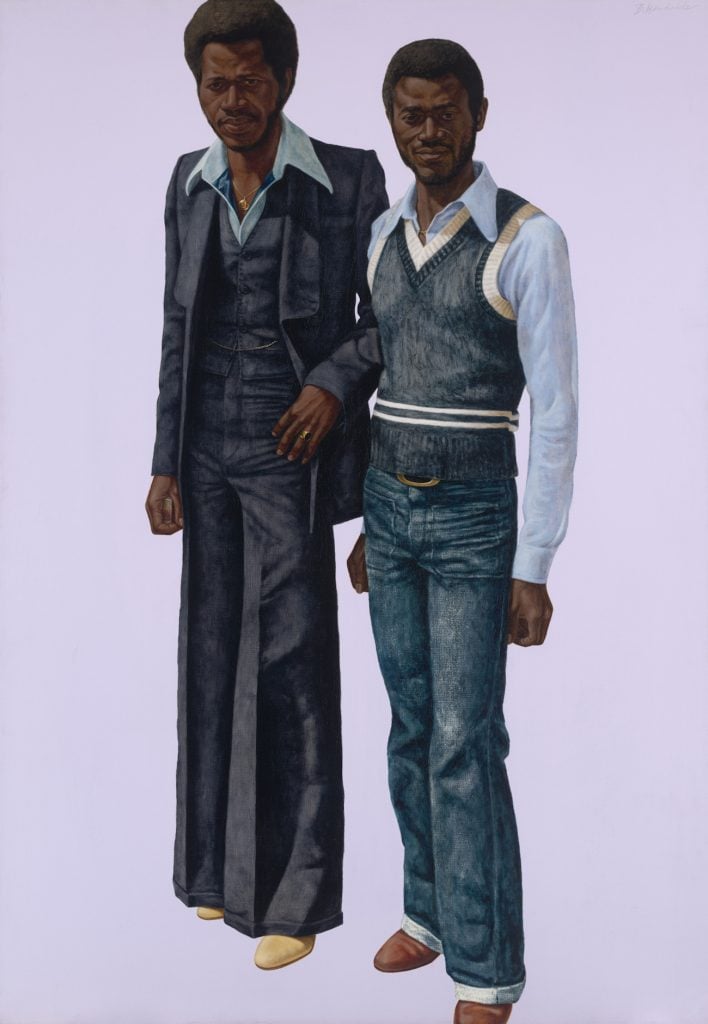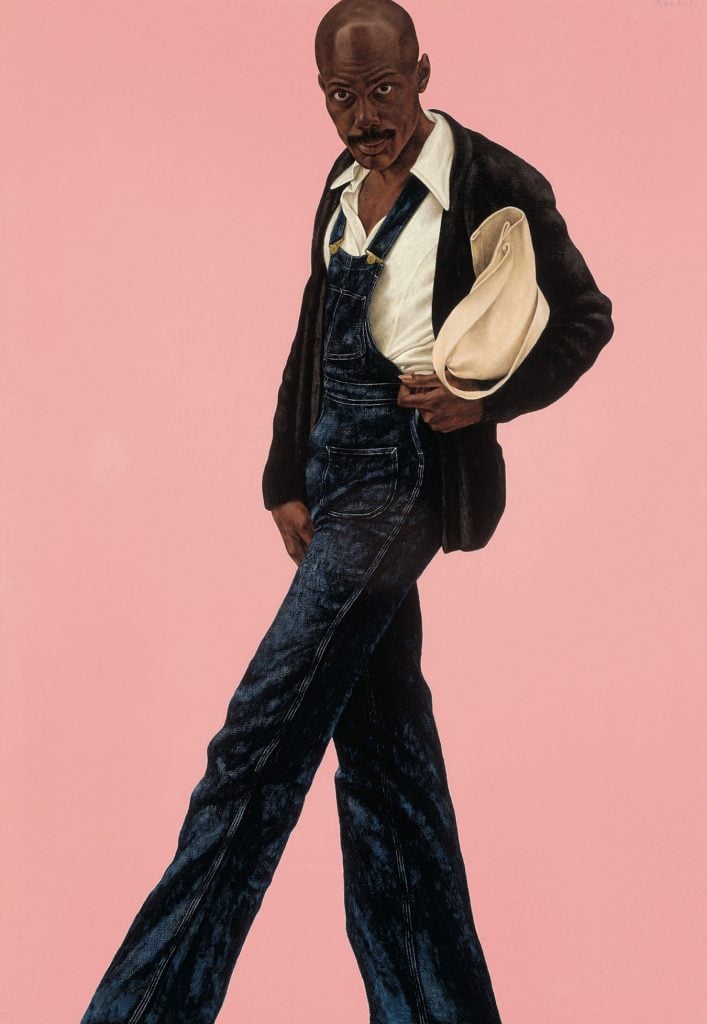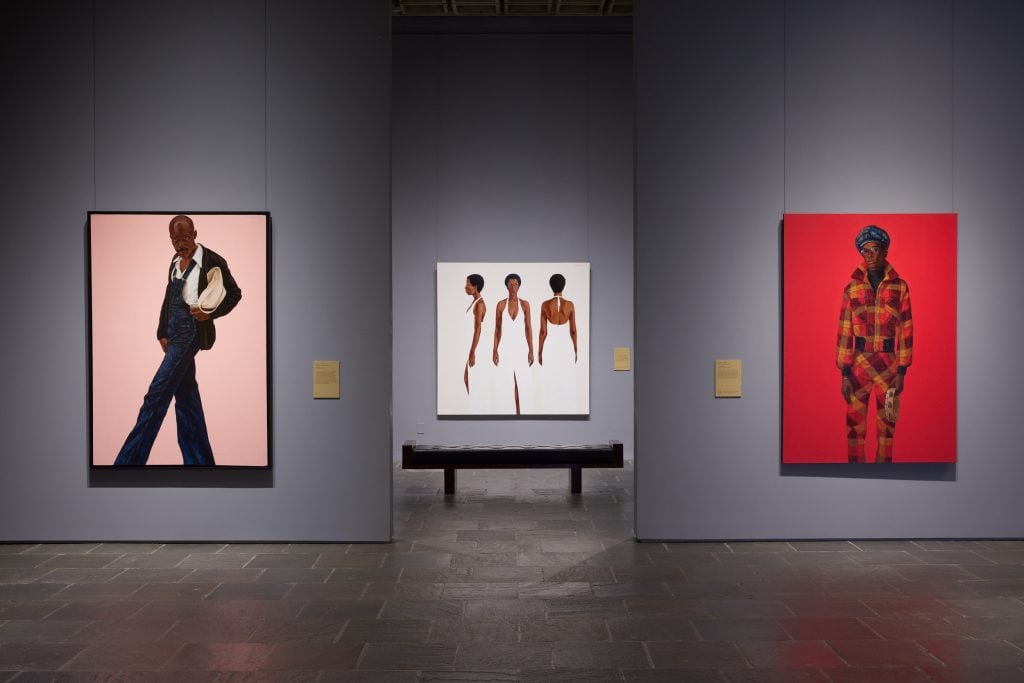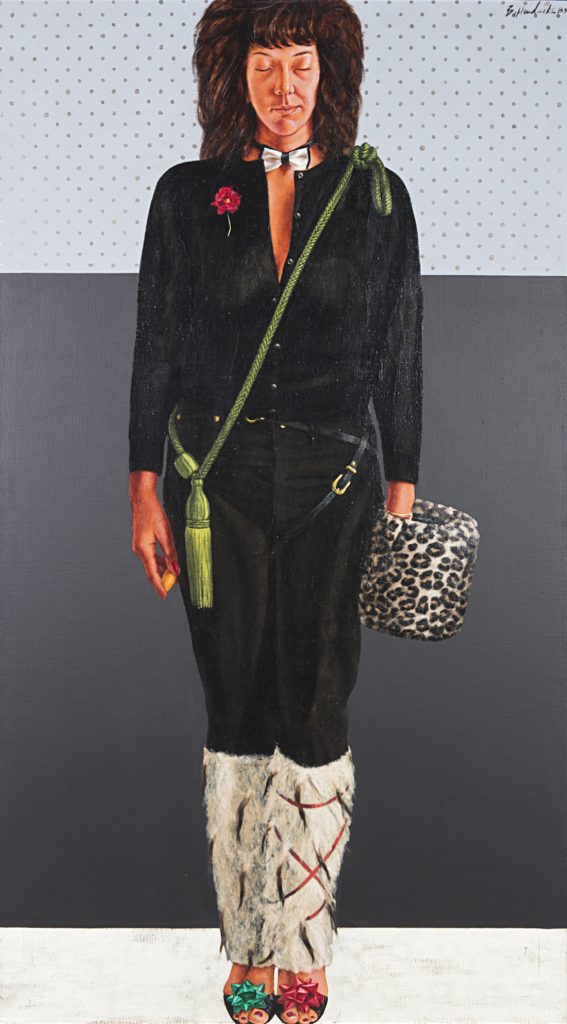On View
A Stunning Show of Portraits by Barkley Hendricks Has Opened at the Frick, Where the Artist Was Once Inspired by Old Masters
The pioneering artist is celebrated for his vivid portraits of Black subjects.

The pioneering artist is celebrated for his vivid portraits of Black subjects.

Eileen Kinsella

It was two years ago that curator and writer Antwaun Sargent first floated the idea of a show on Barkley Hendricks when he and Frick curator Aimee Ng were discussing a good contemporary artist candidate for a show at the museum’s temporary home on Madison Avenue in the famous Breuer building.
“It was not an artist that I knew very well,” admitted Ng. “I’m a specialist in Italian Renaissance painting,” she said during their opening remarks at the packed press preview for “Barkley Hendricks: Portraits at the Frick” that opened yesterday (September 20).
In the two years that ensued, leading up to the show, Ng, Sargent and other staffers learned plenty about the pioneering Black artist, including the influence of Old Masters on his own painting and the extensive time he spent in front of these works during his travels in Europe and of course at one of his favorite museums, the Frick. The result is the series of vivid portraits that he became famous for, ranging from family and friends to random people he encountered and photographed on the street. The show also marks the first-ever exhibition the Frick has dedicated to a Black artist.
The show of just over a dozen stunning portraits is hung on the Frick’s fourth floor galleries, surrounded by historic portraits by James McNeill Whistler and Joshua Reynolds. Visitors stepping off the elevator on the fourth floor are greeted by a 1969 Hendricks portrait, Lawdy Mama, of his relative Kathy Williams that was inspired by Byzantine and Italian Renaissance paintings. Like those painters before him, Hendricks taught himself the painstaking process of applying gold leaf after a trip to Europe in 1966. Meanwhile the title was inspired by the lyrics of Nina Simone. Lawdy Mama sets the tone for the show, with the striking painting flanked by 18th-century white marble busts.

Barkley L. Hendricks, APB’s (Afro-Parisian Brothers) (1978). Yale University Art Gallery, New Haven; Janet and Simeon Braguin Fund. Artwork: © Barkley L. Hendricks; courtesy of the Estate of Barkley L. Hendricks and Jack Shainman Gallery, New York.
The artist “was a voracious museum-goer with a keen eye for historical techniques, styles, and solutions, and he transformed his borrowings and emulations into something utterly new,” wrote Ng in the catalogue accompanying the show. “Hendricks showed a way to productively engage with the complex legacies of historical European art while honoring people largely excluded from its visual record.”

Barkley Hendricks, Misc. Tyrone (Tyrone Smith) (1976). The George Economou Collection. Artwork: © Barkley L. Hendricks; courtesy of the Estate of Barkley L. Hendricks and Jack Shainman Gallery, New York
The 1976 painting Misc. Tyrone, wrote Sargent, is a prime example of the unique portraits that resulted from Hendricks roaming the streets armed with his camera. The inspiration was the “street session” with Tyrone Smith, who was decked out in what Sargent calls “farmer chic,” a crisp white collared shirt under blue jean overalls, who struck a series of dramatic poses. The final portrait sports “a baby-pink background replaces the urban vista,” wrote Sargent in the catalogue. The artist “seems to have developed this strategy of using flat, pared-down backgrounds of vibrant solid color—like Manet and Courbet before him—to counter the over-politicization of his subjects.”
Though Hendricks’s star in the art world is still on the rise and his work is being exposed to a wider audience, the artist has already proved to be a major influence on a younger generation of artists. In addition to Thelma Golden, the current director of the Studio Museum in Harlem, who was one of the first curators to put Hendricks’s work in a major show when she included him in the seminal 1994 Whitney Museum show “Black Male” and penned the introductory essay to the catalogue, artists including Derrick Adams, Nick Cave, Awol Erizku, Rashid Johnson, Fahama Pecou, Mickalene Thomas, and Kehinde Wiley contributed to the catalogue.

Gallery view of “Barkley L. Hendricks: Portraits at the Frick.” Photo by George Koelle.
Major works have been loaned by the Chrysler Museum, the Studio Museum in Harlem, Harvard’s Fogg Museum, the Nasher Museum of Art at Duke University, the Philadelphia Museum of Art, Virginia Museum of Fine Art, Yale University Art Gallery, the Whitney, and several private collections.
In remarks at the press preview, Frick director Ian Wardropper said the exhibition shows us what Hendricks “learned from the Frick, and how he challenged what he was looking at. This, too, is a show that challenges us as an institution.”
The Hendricks show builds on the museum’s continued embrace of contemporary “interventions” rather than adding contemporary art to the historic collection. For example, under an initiative labeled “Living Histories: Queer Views and Old Masters,” the museum invited contemporary artists who identify as queer to respond to works in its collection. Over the course of a year, sought-after artists including Doron Langberg, Salman Toor, Jenna Gribbon, and Toyin Ojih Odutola created paintings responding individually to works by Holbein, Vermeer, and Rembrandt. The resulting works were displayed near the originals.
The Frick’s move to its temporary home at the Breuer building, while the original Fifth Avenue mansion at 70th Street is under extensive renovation, allowed it to obtain a special dispensation where some works could be loaned to other institutions, as it did for the blockbuster Vermeer show at the Rijksmuseum in Amsterdam this past summer.

Gallery view of “Barkley L. Hendricks: Portraits at the Frick.” Photo by George Koelle.
This past spring, the Frick announced it will be closing the Breuer space on March 3, 2024. It will spend the next several months winding down operations and preparing to return its Old Master art collection and operations to the mansion. Though no exact date has been specified yet, museum leaders revealed for the first time to Artnet News that they will reopen the mansion to the public in late 2024. The Hendricks portrait show will be one of the last to take place at the Breuer outpost.

Barkley L. Hendricks, Ma Petite Kumquat (1983). Collection of Ben and Jen Silverman. Artwork: © Barkley L. Hendricks; courtesy of the
Estate of Barkley L. Hendricks and Jack Shainman Gallery, New York.
“That the Frick was one of [Hendricks’s] favorite museums is perhaps unsurprising, given the strength of its portraits,” Wardropper wrote in the catalogue. “Fifty years on, representation of individuals and issues of race remain a critical concern, particularly to Black artists, for whom Hendricks is today a shining example.”
More Trending Stories: